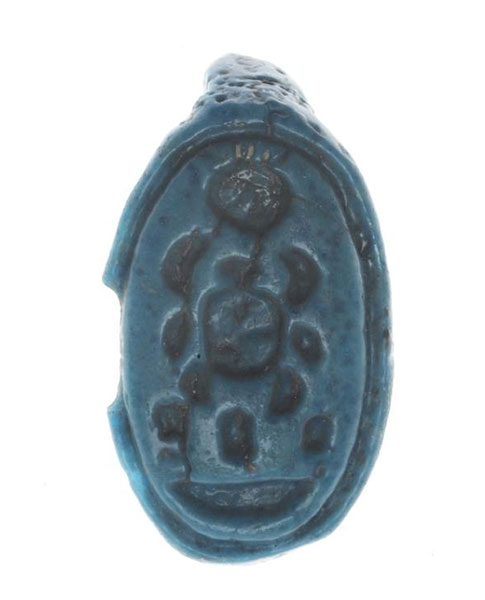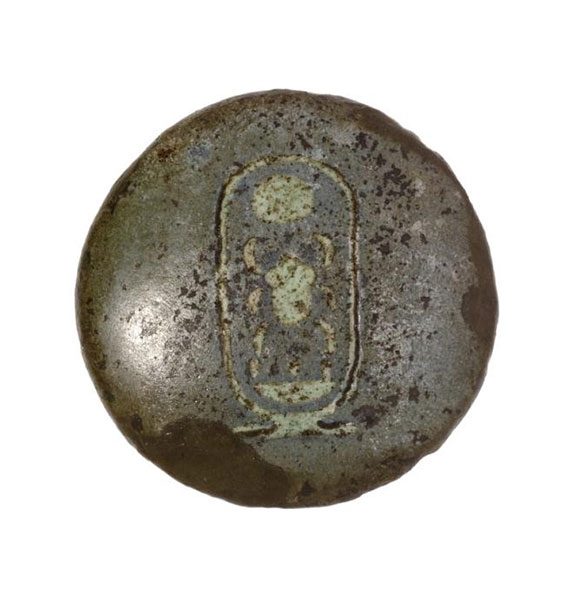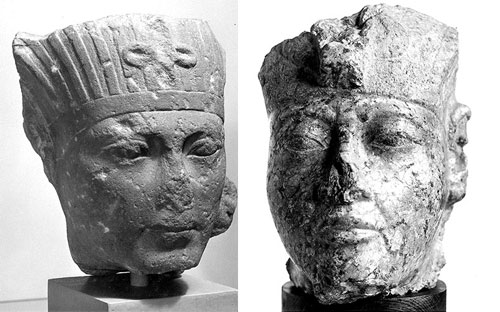Today, 90 years ago on 26 November 1922, a small group gathered in the Valley of the Kings in Egypt at the entrance to a tomb after five years of excavating. They waited as archaeologist Howard Carter painstakingly chiselled an opening through the sealed door. Initially he could see nothing in the flickering candle light, but he described how as his eyes adjusted to the light:
‘the details of the room within emerged slowly from the mist, strange animals, statues, and gold—everywhere the glint of gold… Lord Carnarvon, unable to stand the suspense any longer, inquired anxiously, “Can you see anything?” It was all I could do to get out the words, “Yes, wonderful things”.’

That day transformed our knowledge of ancient Egypt forever. Despite being a hastily arranged burial for a relatively minor king who died in his teens, the contents of the tomb – over six hundred objects, ranging from thrones and chariots to game boards and underwear – was one of the greatest archaeological finds of all time, an unparalleled time capsule from 14th century BC Egypt.
The discovery of Tutankhamun’s tomb fuelled many Egyptologists’ early interest in the subject, including one of our former curators, Cyril Aldred, a notable Egyptologist who served from 1937–1974. While still at school, he met Howard Carter, who tested him on his Egyptological knowledge and was sufficiently impressed to introduce him to the great Egyptologist Sir Flinders Petrie. Carter urged Petrie to take the young man on excavation with him, but Aldred was deterred when Petrie requested that his father contribute to financing the excavation! Despite this initial set back, Aldred had a long and influential career in Edinburgh.
When I arrived as the new curator of the Ancient Mediterranean at the National Museum of Scotland just one month ago and started exploring the incredible ancient Egyptian collection here, I felt something akin to what I imagine Howard Carter must have felt.
Knowing how famous Tutankhamun is today, it is hard to believe that a hundred years ago he was almost completely unknown, even to Egyptologists. Very few occurrences of his name had been found before the discovery of his tomb, but it is possible that an object in our collection may have been amongst the very earliest – a bright blue bezel finger ring stamped with the throne name of Tutankhamun. It is known to have been in the collection of the National Museum of Antiquities in 1900 (the National Museum of Antiquities later merged with the Royal Scottish Museum, to form what is now National Museums Scotland). This suggests that it was amongst the objects brought back from Egypt in the 1850s by the Scottish antiquarian and early archaeology pioneer Alexander Henry Rhind. Rings like this are thought to have been produced because the divine nature of the king’s name held magical, protective qualities.

One of the discoveries that led Howard Carter to find Tutankhamun’s tomb was a find made ten years earlier by Theodore Davis of another tomb in the Valley of the Kings, KV58, which contained gold foil, probably from a royal chariot, and faience furniture knobs decorated with the name of Tutankhamun’s successor Ay. Davis mistakenly ascribed this tomb to Tutankhamun and declared ‘I fear that the Valley of the Tombs [i.e. the Valley of the Kings] is now exhausted’. Rarely has anyone been proven more wrong! Moreover, it was these objects that suggested to Carter that Tutankhamun’s tomb must be nearby.
National Museums Scotland has an object very similar to those first furniture handles found by Davis. It is made from a glazed ceramic composition called faience, decorated with Tutankhamun’s throne name, and would have originally adorned an elaborate, decorated wooden box. All of the beautiful wooden boxes from Tutankhamun’s tomb have very similar handles.

In addition to these small finds, the museum also holds two somewhat mysterious statue heads, which certainly date roughly to the era of Tutankhamun, but over which scholars have debated for decades. Cyril Aldred wrote that he and Bernard V. Bothmer of the Brooklyn Museum had argued over the head ‘for years without reaching finality’.
Both heads are made of granite and wear the royal nemes headdress and have been variously identified as Tutankhamun; an elderly Amenhotep III, Tutankhamun’s grandfather; Ay, Tutankhamun’s vizier and immediate successor, and Horemheb, Tutankhamun’s general who succeeded Ay as king. One of the mystery heads has since been identified as Amenhotep III.

Their hooded eyes and deep furrows from the nose to the downturned mouth are strongly reminiscent of late Amarna art and I can certainly see the resemblance to other statues identified as Tutankhamun. Further research is required, but it is important to remember that royal statues were never intended as portraits and were executed by different artists, so definitive attribution is unlikely. Many scholars have had different opinions on who our mystery pharaohs are – what do you think?
